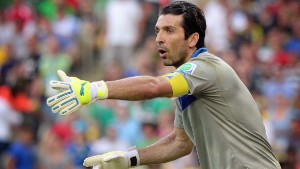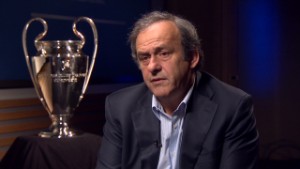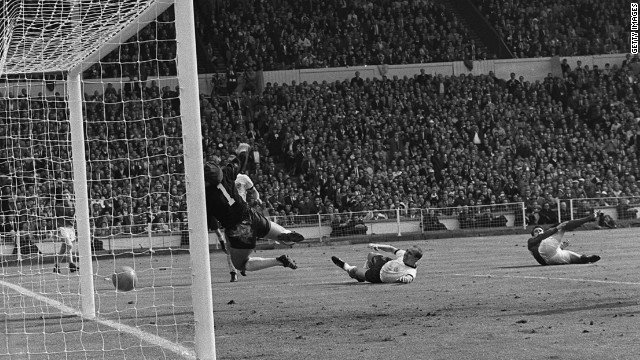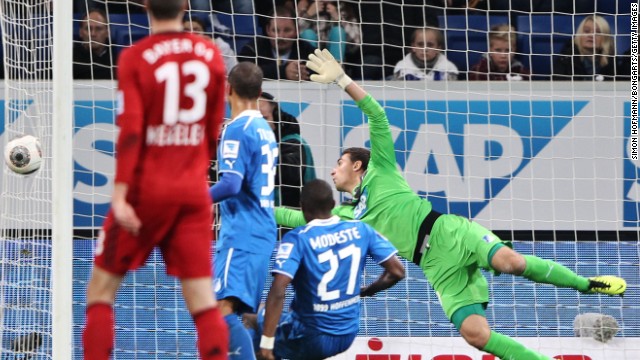.cnn_html_media_utility::beforecolor:red;content:’>>’;font-size:9px;line-height:12px;padding-right:1px
.cnnstrylccimg640margin:0 27px 14px 0
.captionTextfilter:alpha(opacity=100);opacity:1
.cnn_html_slideshow_media_caption a,.cnn_html_slideshow_media_caption a:visited,.cnn_html_slideshow_media_caption a:link,.captionText a,.captionText a:visited,.captiontext a:linkcolor:outline:medium none
.cnnVerticalGalleryPhotomargin:0 auto;padding-right:68px;width:270px
]]>
1
2
3
4
5
6
7
8
9
(CNN) — In 1966, British soccer legend Geoff Hurst booted a right-foot shot against Germany in the World Cup championship game. The ball struck the top crossbar and rifled down near the goal line before spinning out.
Confusion ensued; it was impossible to tell if the ball had crossed the plane.
Eventually, officials awarded the goal, and England secured its first and only World Cup victory.
Try not to remind German fans.
“They can’t take it away now anyway,” Hurst told Britain’s The Telegraph last year. “It is in the book.”
 World Cup will use goal line technology
World Cup will use goal line technology Can Brazil thrive at the World Cup?
Can Brazil thrive at the World Cup?He’s right, but soccer’s governing bodies are doing their best to ensure a similar controversy over a so-called “ghost goal” never happens again.
And as fate would have it, they’re turning to a German company for help.
A new system
According to official estimates, FIFA is paying a small German start-up nearly $3.5 million to operate its new goal-line technology in the 2014 World Cup, which kicks off Thursday in Brazil.
The company, called GoalControl, would install 14 cameras in each of the 12 World Cup stadiums that triangulate the motion of the ball with maximum precision: up to 500 images per second.
With that tracking, plus sensors on the goal line, GoalControl can instantly alert a referee when the ball crosses the line. There’s no need to consult a replay booth or another official; the referee in charge merely looks at their smartwatch.
In other words, say “tchau” to ghost goals in Brazil.
“The cameras are connected to a powerful image-processing computer system which tracks the movement of all objects on the pitch and filters out the players, referees and all disturbing objects,” a GoalControl representative said.
If the system registers that the ball has crossed the goal line, it can send a vibration and a visual “GOAL” signal to referees’ watches within a second.
GoalControl says the idea was developed by Dirk Broichhausen, a company founder, after he attended a soccer match in Germany in which there was a dispute over a goal. He began contacting technicians the next day.
For Broichhausen’s fellow Germans, though, the invention came nearly a half-century late.
The tipping point
 Rousseff defends Brazil World Cup preps
Rousseff defends Brazil World Cup preps World Cup champ on Italy’s fighting spirit
World Cup champ on Italy’s fighting spiritFor years, FIFA President Sepp Blatter dragged his feet before introducing technology to the soccer field. At various points, he complained it would lead to dramatic increases in play stoppage, or that it limits human officials.
Two things changed his mind: the quick, accurate nature of new systems such as GoalControl, and a high-profile controversy involving two familiar opponents.
Forty-four years after Hurst’s 1966 miracle, Germany met England during a World Cup knockout match in South Africa.
In the first half, English midfielder Frank Lampard sent a powerful strike toward the goal, which — of course — hit the top frame, dropped near the goal line, and bounced out.
A goal was not given.
Unlike 1966, however, instant replay revealed the truth: the ball had clearly crossed the line, and England was unjustly denied a goal.
Germany won, 4-1. But for FIFA and its president, it was the ultimate embarrassment. Blatter said Lampard’s ghost goal was the moment he changed his mind.
“For me as FIFA president it became evident the moment what happened in South Africa in 2010,” he said at FIFA headquarters after the incident. “…I have to say ‘thank you Lampard’. I was completely down in South Africa when I saw that it really shocked me, it took me a day to react.”
Debate rages on
Still, there are vocal opponents to introducing technology to soccer officiating.
 Platini: Goal line technology too expensive
Platini: Goal line technology too expensive English football fan goes the distance
English football fan goes the distanceUEFA President Michel Platini is the most prominent. He controls popular European tournaments including the UEFA Champions League.
Earlier this year, Platini told CNN he remains staunchly against goal line technology, philosophically and practically.
“I prefer that we have more referees to see if there is a penalty foul and if the ball is going over the line. We don’t need perfect cameras to see the ball,” he said.
Platini also mentioned the high cost, estimating that implementing the technology in the UEFA Champions League could cost €52 million, or nearly $70 million.
“I prefer to give these millions of Euros to grass-roots, to the young players in football, to some infrastructures so they can play football,” he said.
Cost is also a barrier for Major League Soccer. In a statement, league officials said they have not found the right mix of ease, effectiveness and price concerning goal-line technology, although they support its use in theory.
“We have met with multiple goal-line technology system manufacturers and have been carefully monitoring plans to implement the system,” the league said. “As of today, the time required to purchase, receive, install and properly test the equipment precludes MLS from considering the approved system for use, but we will continue to monitor the progress.”
Most professional American sports leagues use technology to aid officials in some form. Most recently, Major League Baseball expanded its instant replay rules this season.
At any rate, one man is overjoyed with the new technological developments: World Cup hero Geoff Hurst.
“If we had this system 50 years ago, it would have shown quite clearly the ball was at least a foot over the line,” he said.
Viewed 1 times
Stopping "ghost goals" at World Cup


















No comments:
Post a Comment
Thank you for dropping your response, there are other interesting news on the page too